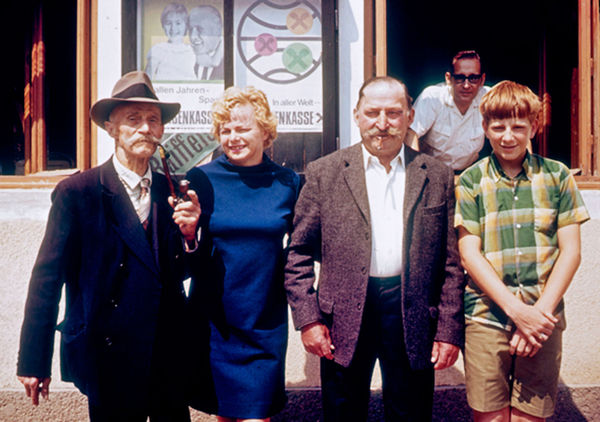Touched by History: Meeting a Witness to WWI Assassination
By Rick Steves

Sometimes history punches you right in the face, and there's no time to duck. It happened to me when I was a teenager in Vienna, accompanying my parents on a business trip. My dad's local contact — Dr. Radler — piled us into his Mercedes for a Sunday morning spin. We sped to a Danube village in time to see the entire population — kids in lederhosen, sturdy moms and dads, respected grandparents — tumbling out of the onion-domed church, across the square, and into the wine garden.
Under its exotic steeple and fortified towers, the town seemed marinated in history. To bring that history to life, Radler pulled up an extra chair, poured a glass of wine, and invited the oldest man in the village to sit next to me. Radler announced, "This man has seen with his own eyes the start of the Great War...the assassination of the Archduke Ferdinand in Sarajevo on June 28, 1914."
I thought Radler was being theatrical until the old man opened his mouth. With two gray horsetails for a mustache and a droopy ivory pipe carved fine enough for a Habsburg, he spoke in streaks, allowing Radler to translate.
"I saw the assassin Princip the Serb step out of a shop. Stopped at the corner was the Archduke Ferdinand in the back of his open car. Princip pulled out his gun, took two steps forward, and shot him in the neck...dead."
Radler, pleased by my fascination with this eyewitness account of one of the defining moments of the 20th century, asked the old man to back up a bit.
The man explained that Gavrilo Princip and his Serb nationalist partners — upset with Habsburg control of Bosnia — went to Sarajevo to kill Ferdinand, heir to the Habsburg throne, who was visiting from Vienna. They threw a bomb at his car. But they miscalculated the speed of the entourage, and the bomb landed on the car behind Ferdinand. The assassins scattered.
Pausing as if to rewind the videotape of his life, the old man stared at his lard-covered bread. After twisting a pinch of salt on it with nicotine-stained fingers, he continued. "Princip went into a shop to hide...and have a schnapps. Later, as he left the shop he stood before his target."
Incredibly, the archduke's car — which took a detour so that Ferdinand could visit the bombing victims at a hospital — had stopped on the street in front of the demoralized assassin.
Leaning forward, as if we were the first to hear this part, the old man said, "Princip rubbed his eyes. How could this be true?"
My parents and I leaned forward as well. Even Radler was on the edge of his chair. As we huddled together over our table, the translating continued. "The assassin pulled out his pistol. He shot both the archduke and his wife. And soon after this..."
He paused and I said, "World War One."
June 28, 2014, marked the 100th anniversary of that shot heard 'round the world. Over the years, I've seen many sights that are key to WWI history — the killing ground of Flanders Fields, the fortress of Verdun, the Italian mausoleum built after the disastrous Battle of Caporetto.
Compared to them, the nondescript street corner in Sarajevo might disappoint some travelers, but it still gives me goose bumps. This is the spot in Bosnia-Herzegovina where the assassination took place. It was across from Sarajevo's Latin Bridge, now home to a plaque and the humble Sarajevo 1878–1918 Museum.
This museum traces the four decades when Sarajevo was part of the Vienna-ruled Austro-Hungarian Empire, with a special emphasis on the assassination. There's a map showing the sites relating to the assassination, life-size mannequins of Franz Ferdinand and his wife Sophie, and clips from a film about the killing.
If you want to see the car Franz Ferdinand rode in, the uniform he wore, and the murder weapon, you'll have to travel to Vienna's Museum of Military History, where there's an exhibit devoted to Sarajevo in 1914.
While World War I was fought more than a century ago and there are no more survivors to tell its story, the WWI sights and memorials scattered around Europe do their best to keep the devastation from fading from memory. Many of these sights have been restored in honor of the 100th anniversary of the war's beginning.
My own memory is as fresh as that day in the Danube village in 1969. I'll never forget how the old man's eyes twinkled, as if he understood that a seed was being planted in this wide-eyed American kid. That seed would grow to be a lifelong love of European history — and a career in travel.

